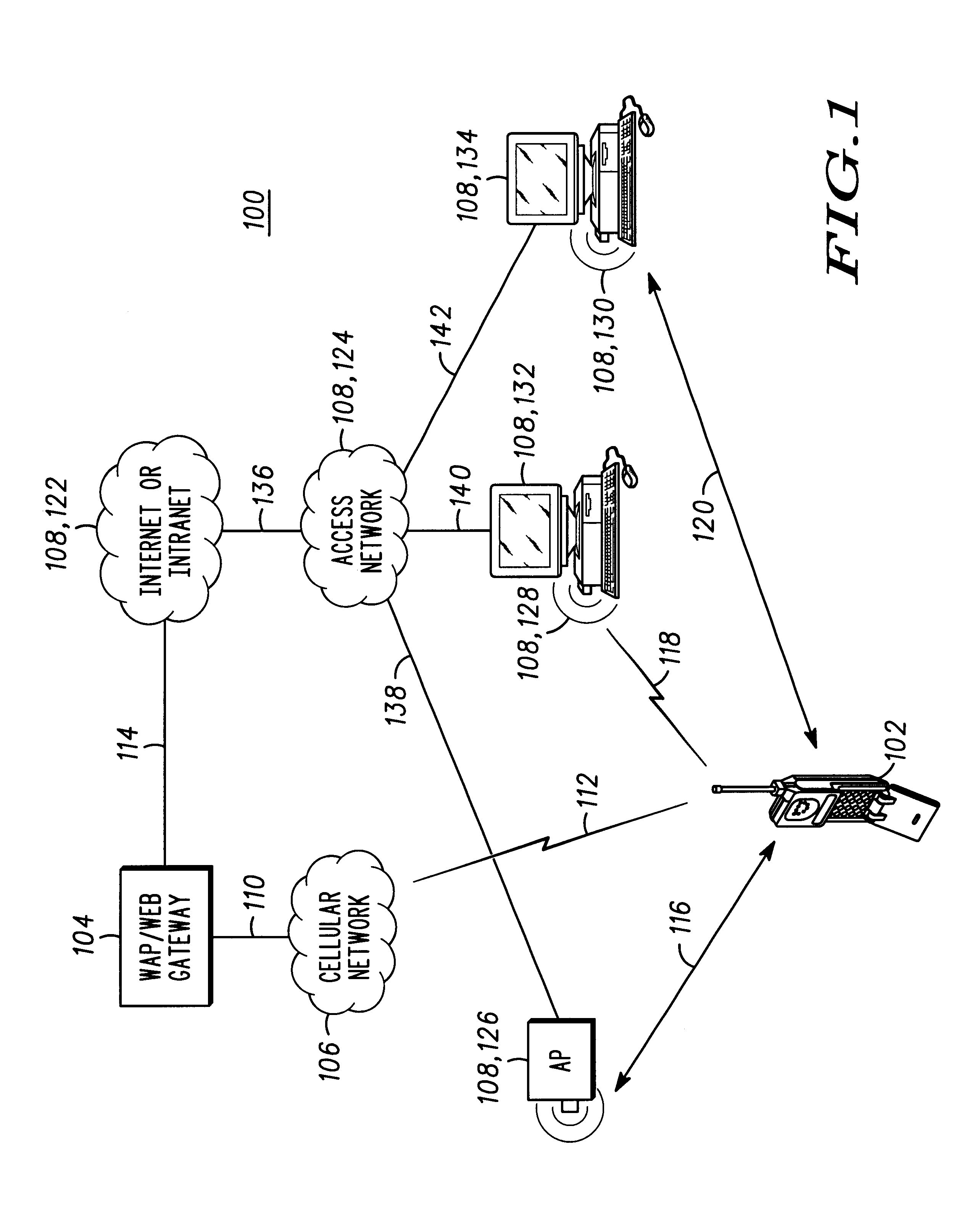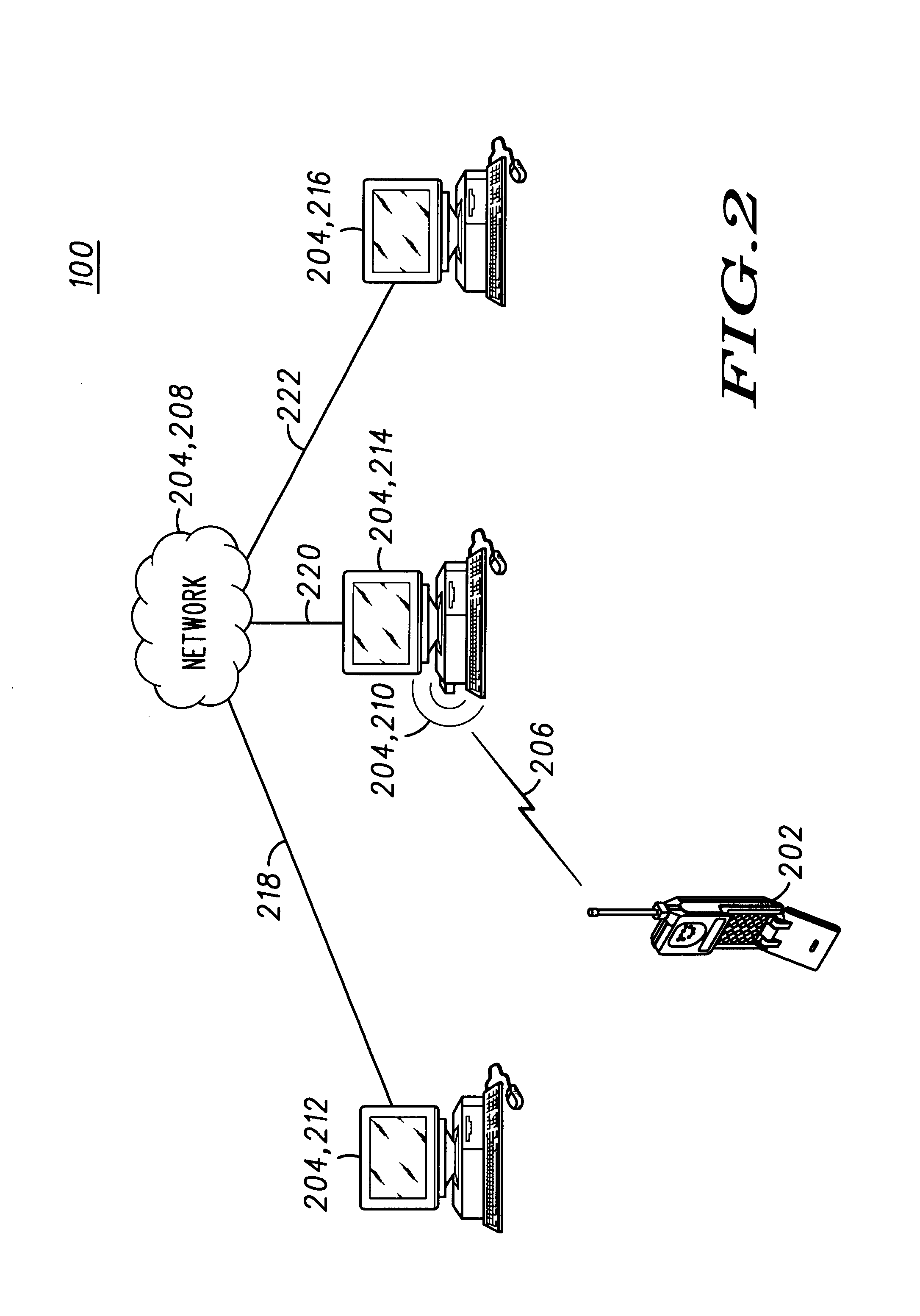Method and apparatus for splitting control and media content from a cellular network connection
a technology of cellular network connection and media content, applied in the field of mobile communication system, can solve the problems of limiting the typical memory capacity of a wap-capable mobile station, and putting a strain on the capacity and achieve the effect of reducing the bandwidth requirement and reducing the size of the cellular network
- Summary
- Abstract
- Description
- Claims
- Application Information
AI Technical Summary
Benefits of technology
Problems solved by technology
Method used
Image
Examples
embodiment 100
Referring to FIG. 2, as an alternative to the configuration shown in FIG. 1, the first preferred embodiment 100 may comprise a mobile station 202, a gateway (shown in FIG. 1 as 104), a first network (shown in FIG. 1 as 106) and a second network 204. The second network 204 is connected to the gateway 104 and capable of coupling to the mobile station 202 via wireless link 206. The second network 204 comprises general network 208 (which may include an Internet, intranet, and / or access network), an access point 210 and at least one output component 212, 214, 216. The general network 208 is connected to the gateway 104, and the access point 210 and output components 212, 214, 216 are connected to the general network via network links 218, 220, 222, directly or indirectly. The access point 210 is also capable of coupling to the mobile station 202 via the wireless link 206.
For a second configuration for the first scenario, an access point 210 may only be associated with one or more remote ...
embodiment 300
Referring to FIG. 3, a second preferred embodiment 300 of the present invention comprises a mobile station 302, a gateway 304, a first network 306 and a second network 308. The first network 306 is connected to the gateway 304 via network link 310 and capable of coupling to the mobile station 302 via wireless link 312. The second network 308 is connected to the gateway 304 via network link 314 and capable of coupling to the mobile station 302 via wireless link 316. The second network 308 comprises an Internet or intranet 318, an access network 320, an access point 322 and at least one output component 324. The Internet or intranet 318 is connected to the gateway 304 via the network link 314, and the access point 322 and the output component 324 are connected to the Internet or intranet, directly or indirectly. For example, as shown in FIG. 2, the access network 320 is connected to the Internet or intranet 318 via network link 326, the access point 322 is connected to the access netw...
PUM
 Login to View More
Login to View More Abstract
Description
Claims
Application Information
 Login to View More
Login to View More - R&D
- Intellectual Property
- Life Sciences
- Materials
- Tech Scout
- Unparalleled Data Quality
- Higher Quality Content
- 60% Fewer Hallucinations
Browse by: Latest US Patents, China's latest patents, Technical Efficacy Thesaurus, Application Domain, Technology Topic, Popular Technical Reports.
© 2025 PatSnap. All rights reserved.Legal|Privacy policy|Modern Slavery Act Transparency Statement|Sitemap|About US| Contact US: help@patsnap.com



